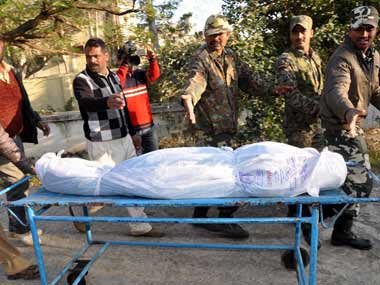“The balance of terror has tilted in their favour,” said a senior CRPF officer to me grimly, referring to the Latehar encounter in Jharkhand four days ago in which not only were 10 CRPF jawans were killed but the Maoists did something they had never done before. They had implanted a pressure bomb prototype in the abdomen of a dead CRPF jawan, after he was killed in the ambush, with the intention of inflicting more casualties during the airlifting of his body. Three civilians were killed when security personnel tried to shift the bodies without realising that they were booby trapped with an explosive device by the Maoists. Another 1.5 kg IED, which was crudely planted by removing a part of the intestine in jawan Babulal Patel’s body, was powerful enough to blow up a landmine-proof vehicle. The crude stitches on Patel’s body were noticed during the autopsy, raising suspicion. The bomb disposal experts who defused the bomb admitted that it was a first for them to defuse a bomb in a body. The Maoist strategy of using a dead security person as a suicide bomber is seen as a crossing of all limits. There are a few reasons why. One, the Maoists have been known to leave behind booby traps in the form of landmines at a scene of a battle, which is one reason why security forces are wary of rushing in immediately on hearing of news of an encounter. But Latehar brings bad tidings. That is because the MCC Maoists (Arvind who is suspected to be the brain behind the attack, is a leader from the MCC which merged with the People’s War Group to form the CPI (Maoist) in 2004) were never known for their IED showmanship. In contrast, the People’s War Group which operated in Andhra Pradesh was notorious for using IEDs, almost like a signature. [caption id=“attachment_584859” align=“alignleft” width=“380”]  The body of the CRPF jawan was found to contain a one kg shell of explosive. AFP[/caption] Two, a ‘surgery’ like the one carried out in Latehar would have taken more than an hour and indicates the presence of several ’experts’ among the 250 outlaws who surrounded the troops and carried out the encounter. It also indicates a more inhuman and barbaric side to the movement, that is known to mete out cruel treatment to their enemies by branding them police informers in kangaroo courts. Three, the Maoists in Jharkhand with this single encounter and mutilation of the bodies have gained the psychological upper hand. Because while they will put up a brave front, somewhere deep down in their heart, every CRPF jawan will now fear for his dead body. What does this mean for India’s fight against its most serious internal security threat? Strategists in the paramilitary outfit while terming the incident “unprecedented” say the time for ‘gentleman soldiers’ is over. “This is an asymmetrical war that calls for asymmetrical responses. This could mean not going by the rulebook in letter and spirit. We have to hit them below the belt,’’ says a senior CRPF officer who has served in several Maoist-infested zones. But it is easier said than done. What makes the job difficult is that the intelligence available to those heading anti-Maoist operations is practically next to nothing. This means the onus is on the jawans on the ground to get their inputs based on how the villagers in an area are behaving, looking out for footprints and other tell-tale signs. Security experts say Jharkhand will have to hit back and fast, instead of having a calibrated response that is carried out after a long time, even if it means targeting the overground sympathisers who helped the Maoists undertake such a daring encounter. Because a demoralised force could be the state’s worst enemy. This encounter taking place in the first month of the year also confirms some of the worst fears of the security forces. They believe that 2012, which was a relatively quiet year in terms of Maoist strikes, was a year of strategic retreat, during which they decided not to confront the enemy but to consolidate by recruiting, recuperating, striking new alliances and looking for newer ways of raising funds and acquiring weapons. The CRPF believes 2013 could see Maoist violence of alarming proportions.
What does the booby trapping of CRPF jawan’s bodies mean for India’s fight against its most serious internal security threat?
Advertisement
End of Article


)
)
)
)
)
)
)
)
)



